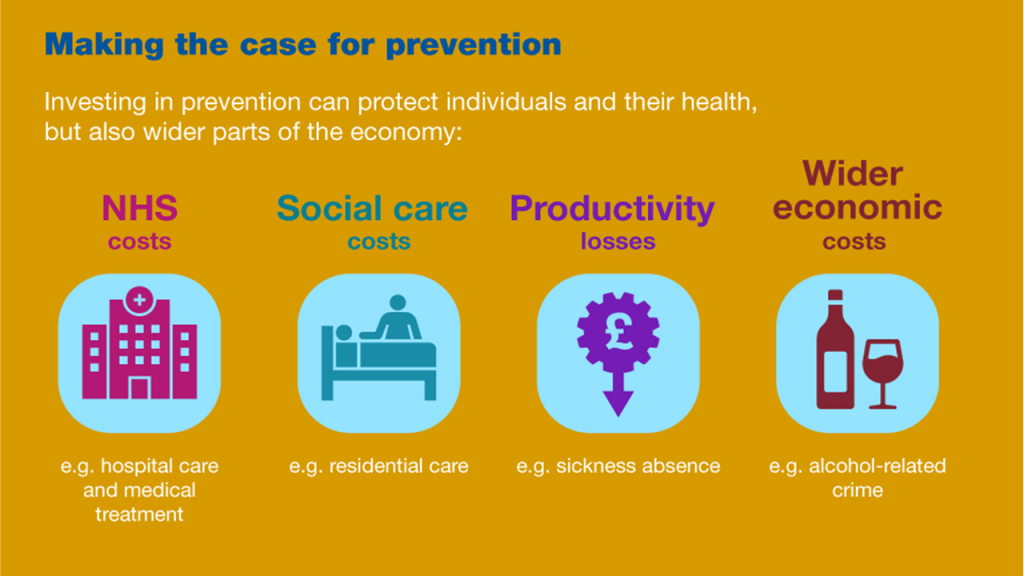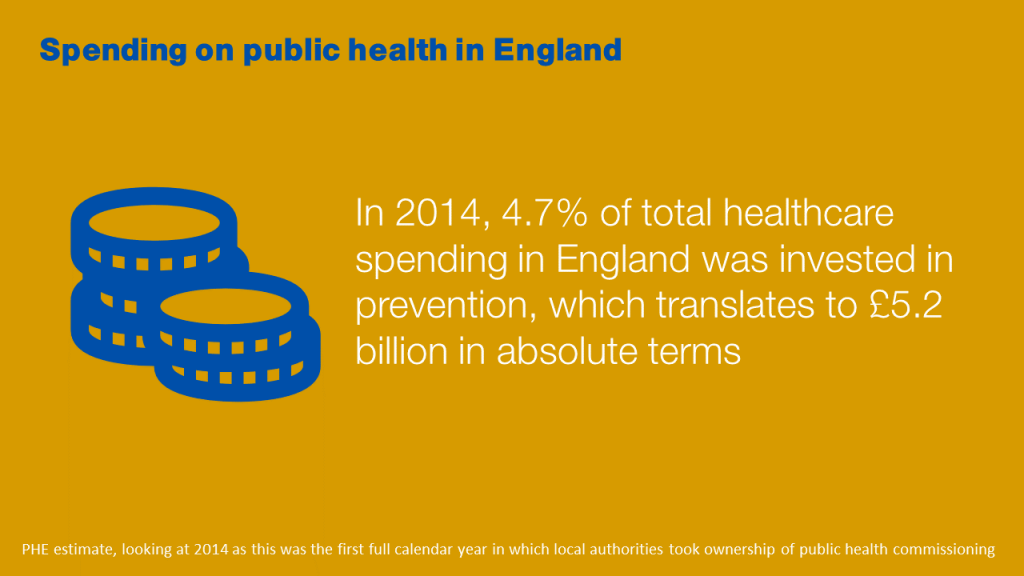
PHE and the Chartered Institute of Public Finance and Accountancy (CIPFA) are working together to make the case that prevention and promoting good health is an important investment for our country.
In this blog PHE’s Finance and Commercial Director Michael Brodie and Chief Economist Brian Ferguson answer questions about the project.
How has this project come about?
MB: “Promoting good health is an investment, not a cost.
The healthier we are, the more prosperous and productive our country can be, so we must build on all of the techniques available to us to make this case at local and national level, and across all parts of society.
PHE has been collaborating with CIPFA since 2016, looking at the need for a common, transparent approach to understanding the costs and benefits of public health interventions.
More recently, we’ve developed our thinking through a series of round-table meetings with experts from local government and health, and in a new report ‘Evaluating preventative investments in public health in England’ we’re hoping to shape the debate about how we best fund prevention in future.
What are the limitations of current approaches to funding public health initiatives?
BF: “Local areas are doing a great job with the funding they have available, making increasingly difficult decisions on where to invest or disinvest, but we know there’s frustration that the bar seems to be set higher for justifying public health investments compared to the delivery of healthcare, including calls to demonstrate how investments in prevention will deliver short-term cashable financial savings, which is not something asked for from spending on treatment.
Evidence shows that investing in prevention is frequently cost-effective (and can generate economic returns over short timeframes) but evaluating services is complicated where costs and benefits are felt across a number of organisations, for instance services commissioned by local government that actually lead to benefits for the NHS later down the line.”
MB: “This came through strongly during our round table meetings where stakeholders emphasised that a more robust measurement and evaluation system must be developed across the healthcare sector and beyond to improve the understanding and transparency of spending decisions and address the issue of short-termism.
PHE and CIPFA have set out to champion a common approach which views investment through the lens of the public pound in a place or locality rather than the local government pound or the NHS pound”.

What can local areas do to make this happen?
MB: "The trend towards more localised decision-making brought about by devolution, city regions, combined authorities and the integration of health and social care (through STPs/ICSs), means the time is right for a culture change in the way we fund prevention."
In our new report PHE and CIPFA have identified existing tools and resources which could be used across different types of intervention, across different organisations and at local, regional or national level to evaluate preventative investment.
In our report we conclude that:
- Use of Cost Benefit Analysis (CBA) methodology can provide a balanced evaluation of the financial and economic costs and benefits of preventative investment. To date, the CBA methodology has had a relatively limited role in health.
- The Green Book/New Economy model is well-suited to judging the comparative merits of prevention investments and allows a whole-system view to facilitate decisions on a place-based basis.
- Using International Public Sector Accounting Standards Board (IPSASB) guidance and the principles of the Prudential Code would allow for consideration of the impact of prevention investment, particularly on long-term financial sustainability, and would enable comparative assessment of investment across time and place.
Do you think these approaches will lead to increased spending on prevention?
MB: “With increasing budgetary pressures in health, social care and other public services, the need to invest in prevention of ill-health in order to secure the future of those services is stronger than ever.
This has been highlighted in ‘Prevention is better than cure’ the Government’s prevention vision and also through the welcome focus on population health in the NHS Long Term Plan.
Going beyond the clear moral case for preventing people from becoming ill, we also believe public health interventions are a sound investment and adopting different methods to evaluate them will not only aid in making the case for increased investment, but also increase transparency and allow for comparison and analysis of the interventions over time and place.”

BF: “A key principle for making the case for appropriate investment in prevention is the need for an accurate estimate of overall spend and how this relates to overall spend on healthcare.
PHE analysis published in our new report estimates that in 2014, 4.7% of total healthcare spending in England was invested in prevention (£5.2bn in absolute terms). The year 2014 was selected as an initial baseline, as this represents the first full calendar year that local authorities took ownership of public health commissioning.
This work provides a fresh perspective on the UK wide estimates already available through the UK Health Accounts and helps us further consider as a system whether the levels of investment in prevention in England are optimal.”
What’s next for this project?
BF: “The overall ambition, backed by the stakeholders we’ve talked to, is to change the way that prevention is considered so it is viewed and treated as an investment and properly accounted for as such.
We’re pleased to be fully supported by CIPFA as the public service standard setting body for accounting.
This change will not happen overnight and will rely on the commitment and expertise of NHS and local government finance colleagues and commissioners.
PHE and CIPFA are keen to engage with at least one local area to test the principles and approaches contained within our new report in order to generate further best practice advice.”
For more information read our new report 'Evaluating preventative investments in public health in England’ or take a look at our range of blogs and resources focussed on health economics.
